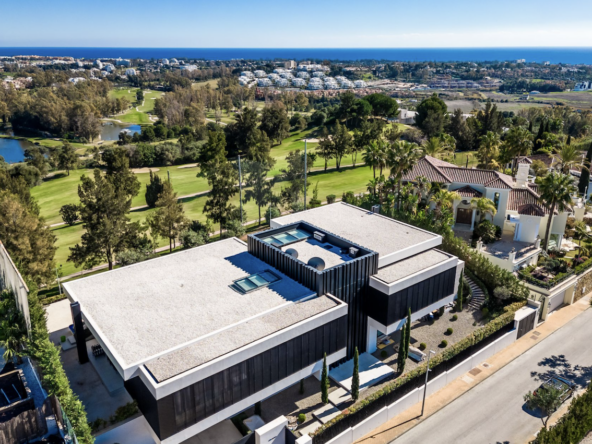Nikola Tesla and His Contributions to Electricity:
Introduction
Nikola Tesla, often referred to as the “father of modern electricity,” was a visionary inventor and engineer whose contributions to the field of electricity have left an indelible mark on the world. Born in 1856 in what is now Croatia, Tesla’s work in the late 19th and early 20th centuries laid the foundation for many of the electrical technologies that we rely on today. In this essay, we will explore Tesla’s life, his groundbreaking inventions and discoveries, and his enduring legacy in the world of electricity.
Early Life and Education
Nikola Tesla was born on July 10, 1856, in the village of Smiljan, which was then part of the Austrian Empire. His father, Milutin Tesla, was a Serbian Orthodox priest, and his mother, Georgina Đuka Tesla, came from a family of inventors and craftsmen. From an early age, Tesla showed a keen interest in mathematics and science, often conducting experiments and inventing devices on his own.
Tesla’s formal education began in the Austrian Polytechnic in Graz, where he studied engineering and physics. He later continued his education at the Charles-Ferdinand University in Prague and eventually attended the University of Paris. However, due to financial constraints and differing views with his professors, Tesla never completed his formal university education.
Early Career
In 1881, Tesla moved to Budapest, where he worked for the Budapest Telephone Exchange, and later to Paris, where he took a job with the Continental Edison Company. It was during his time at Edison that he began to develop the ideas that would lead to some of his most significant inventions.
Direct Current vs. Alternating Current
One of the most famous battles in the history of electricity was the “War of Currents” between Thomas Edison and George Westinghouse, with Tesla playing a pivotal role. Edison was a proponent of direct current (DC) electricity, while Tesla and Westinghouse championed alternating current (AC) electricity.
Tesla’s work on AC electricity systems was revolutionary. He developed a series of patents related to AC, including the famous “Tesla Coil,” which allowed for high-voltage, high-frequency electrical currents. AC offered numerous advantages over DC, including the ability to transmit electricity over longer distances with less energy loss. This was a fundamental breakthrough that paved the way for the modern electrical grid.
The development and widespread adoption of AC electricity were instrumental in the electrification of the United States and other parts of the world. Today, the vast majority of the world’s electrical systems use AC, thanks to Tesla’s contributions.
Induction Motor
One of Tesla’s most significant inventions was the alternating current (AC) induction motor, which he developed in 1888. The AC induction motor is a type of electric motor that relies on the principles of electromagnetic induction. It is used in a wide range of applications, from industrial machinery to household appliances.
Tesla’s AC induction motor was a breakthrough because it was much more efficient than the DC motors of the time. It was also more reliable and required less maintenance. Tesla’s invention had a profound impact on industrialization and the development of machinery, as it allowed for the creation of powerful, efficient motors that could be used in a wide range of applications.
Tesla Coil
The Tesla Coil is one of Nikola Tesla’s most iconic inventions. It is a type of resonant transformer circuit that produces high-voltage, low-current, high-frequency alternating-current electricity. The Tesla Coil was initially developed for experiments in wireless power transmission and the study of electrical phenomena.
While the Tesla Coil had limited practical applications in its original form, it became famous for its ability to produce dramatic and visually striking electrical arcs. Tesla used the coil in public demonstrations to showcase the power and potential of electricity. The Tesla Coil has since become a symbol of scientific ingenuity and is still used today in educational demonstrations and high-voltage applications.
Wireless Power Transmission
Tesla was a visionary who believed in the possibility of wireless power transmission. In the late 19th and early 20th centuries, he conducted numerous experiments to demonstrate the feasibility of transmitting electrical power without the need for physical wires. His most famous experiment in this regard was the construction of the Wardenclyffe Tower in Shoreham, New York.
The Wardenclyffe Tower was intended to be the centerpiece of Tesla’s wireless power transmission system. He believed that he could use the Earth itself as a conductor to transmit electrical power over long distances. While the project ultimately ran into financial difficulties and was never completed, Tesla’s ideas laid the groundwork for modern wireless technologies, including radio communication and, more recently, wireless charging.
Radio
One of the contentious points in the history of science and technology is the invention of radio. Guglielmo Marconi is often credited with inventing radio communication, but Tesla’s contributions to the development of radio technology cannot be overlooked.
Tesla filed for a patent for the invention of radio in 1897, predating Marconi’s work. Tesla’s system used tuned circuits to transmit and receive radio signals, a concept that is fundamental to modern radio technology. However, Tesla’s patent was eventually invalidated in a legal battle, and Marconi received widespread recognition for his work on radio.
While Marconi is rightfully celebrated for his contributions to wireless communication, it is essential to acknowledge Tesla’s pioneering work in this field. His ideas and inventions laid the foundation for many aspects of modern radio technology.
X-Rays and Remote Control
In addition to his work on electricity and magnetism, Tesla made contributions to other fields of science and technology. He conducted experiments with X-rays and developed early X-ray imaging technology. Tesla was also a pioneer in the field of remote control, demonstrating a remote-controlled boat as early as 1898. These inventions and demonstrations were ahead of their time and showcased Tesla’s innovative thinking in various scientific domains.
Legacy and Recognition
Nikola Tesla’s contributions to the field of electricity and electrical engineering are immeasurable. His work laid the foundation for the modern electrical power distribution system, the development of powerful electric motors, and the understanding of high-frequency electrical phenomena. Many of the technologies we rely on today, from the electrical grid to radio communication, have been shaped by Tesla’s ideas and inventions.
Despite his groundbreaking work, Tesla struggled with financial difficulties throughout his life. He had a reputation for being eccentric, and his unorthodox ideas sometimes hindered his ability to secure funding and support for his projects. This led to a decline in his later years, and he died in relative obscurity in 1943.
In recent decades, there has been a resurgence of interest in Tesla’s life and work. He is now recognized as a scientific and engineering visionary who was ahead of his time. Tesla’s contributions have been celebrated in popular culture, with numerous books, documentaries, and films dedicated to his life and inventions.




